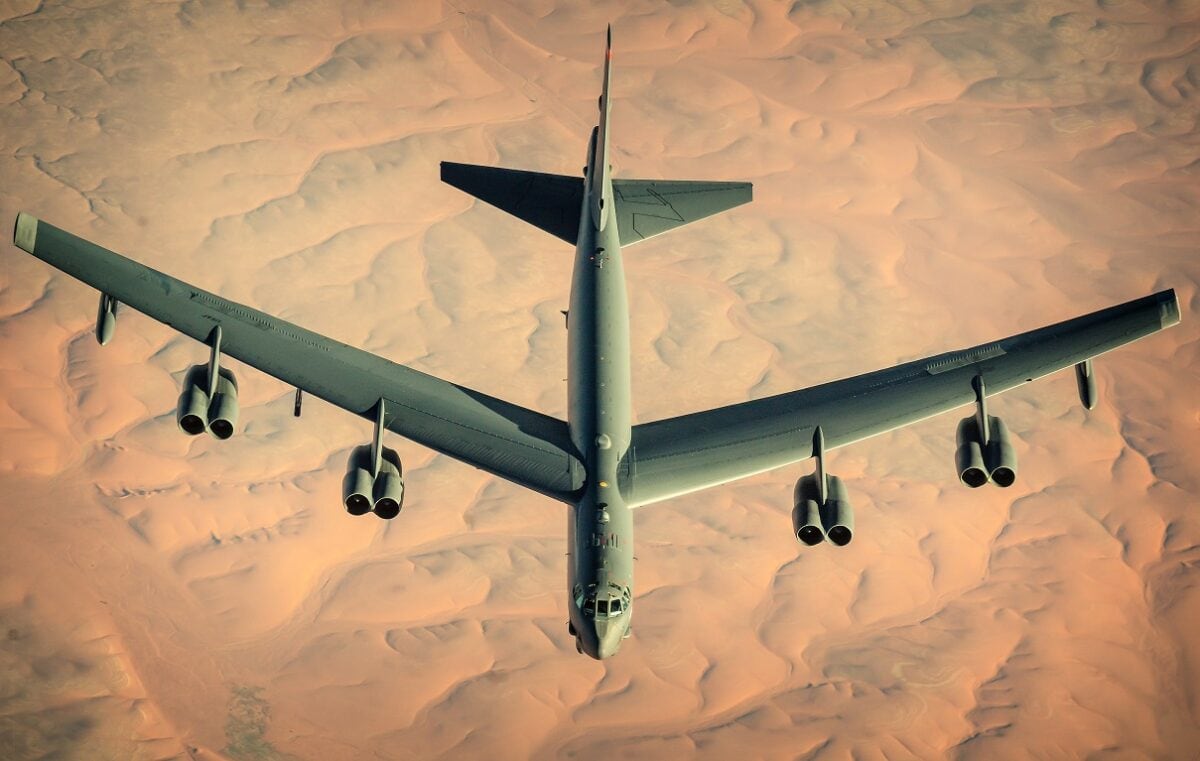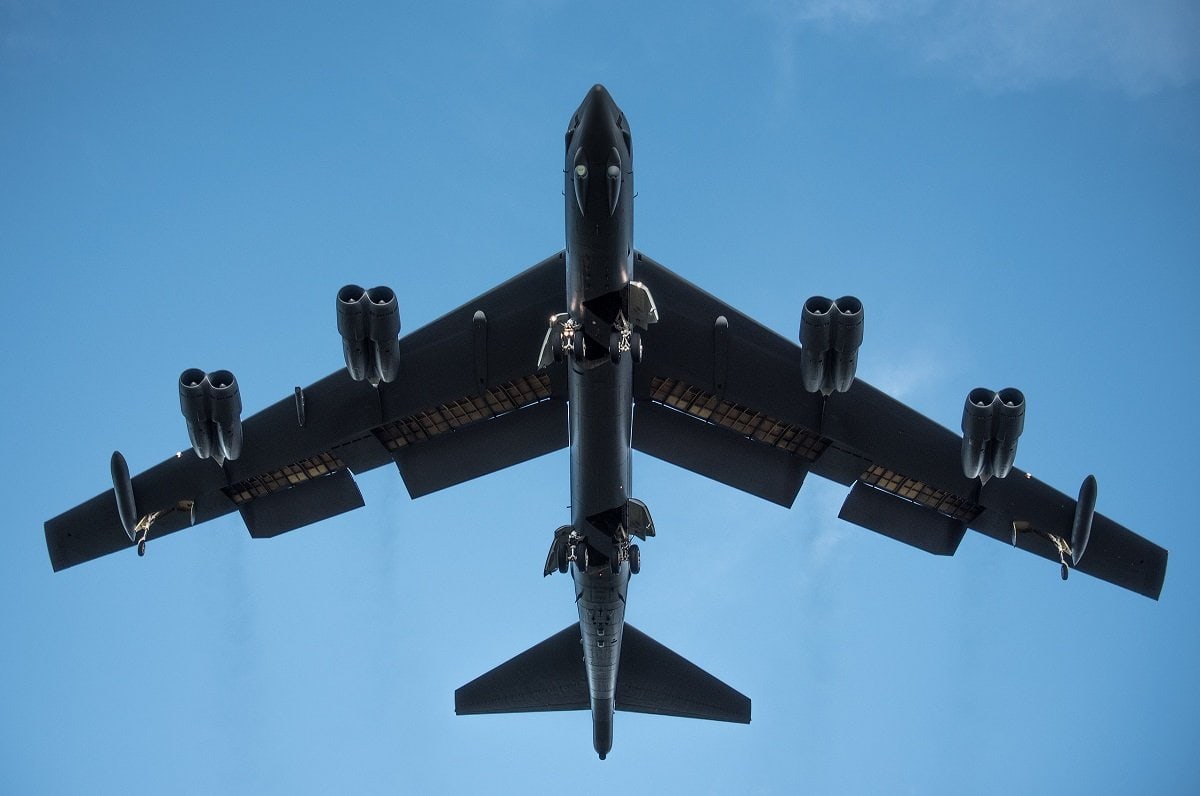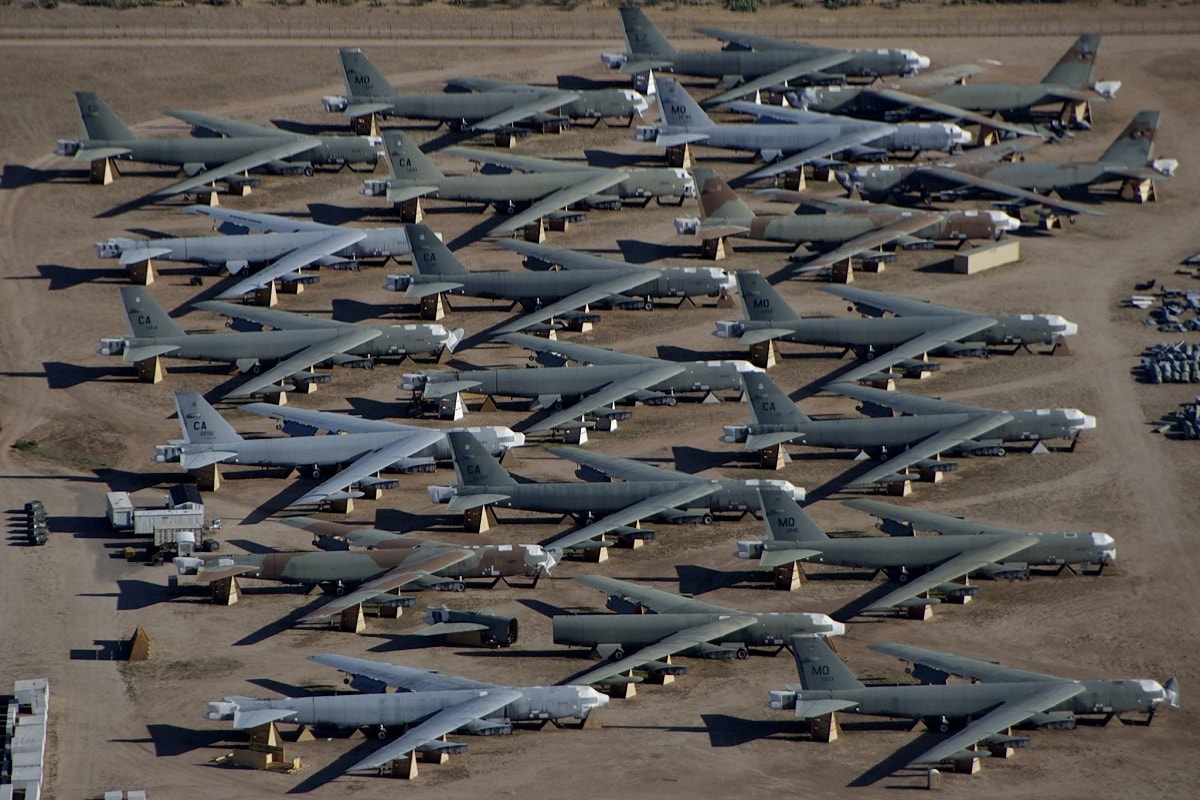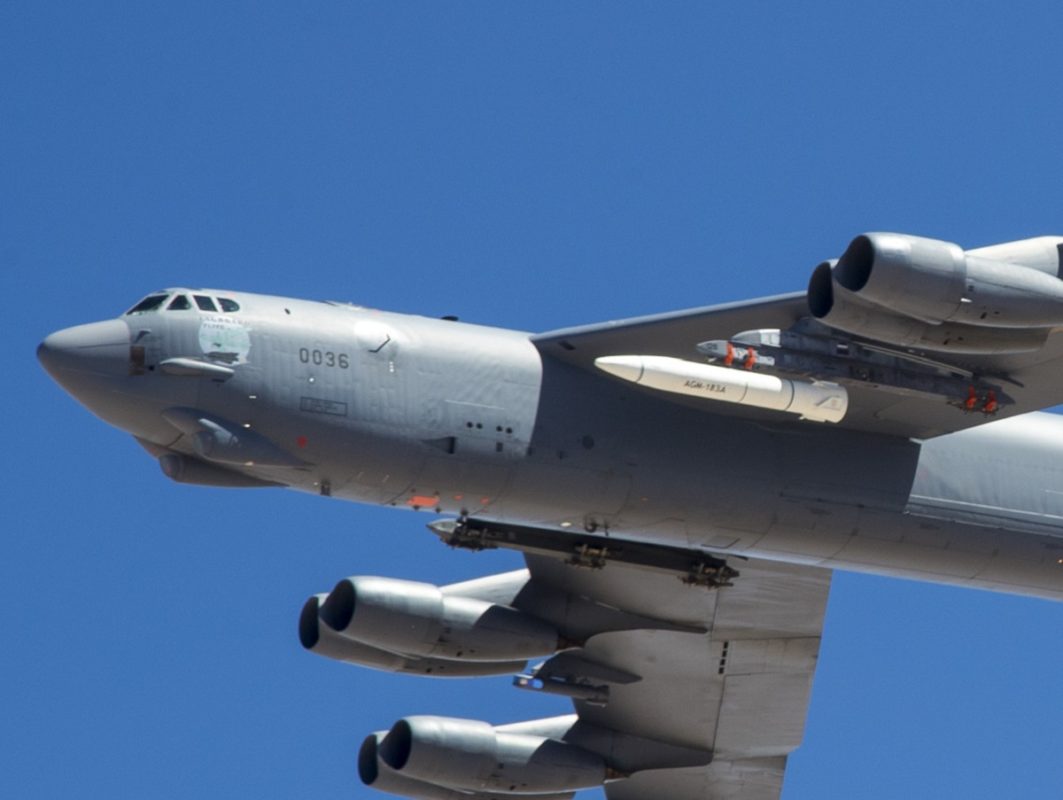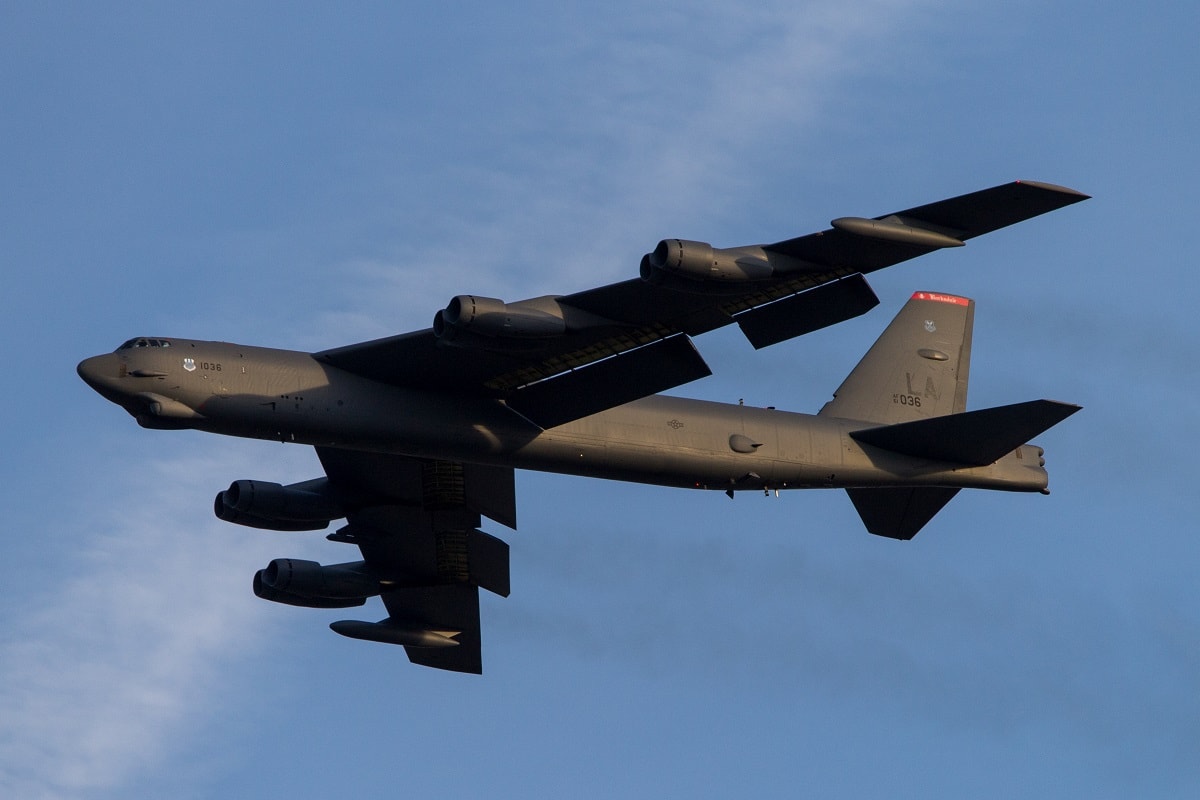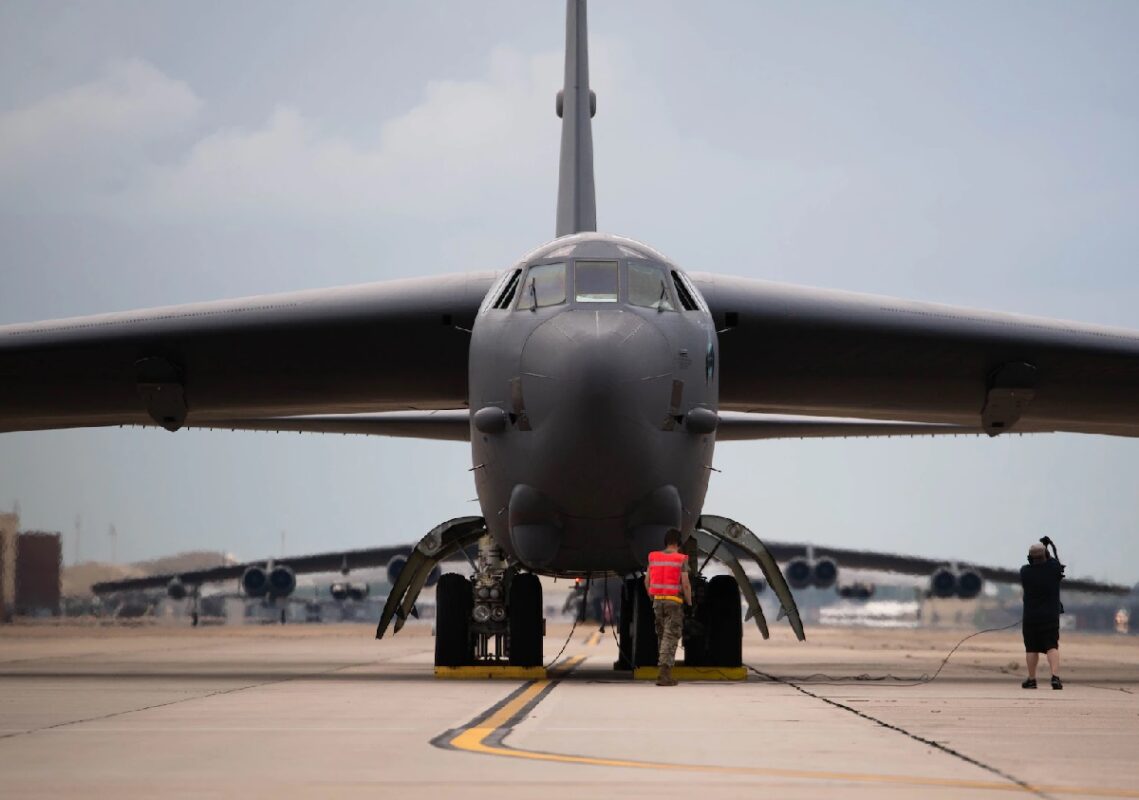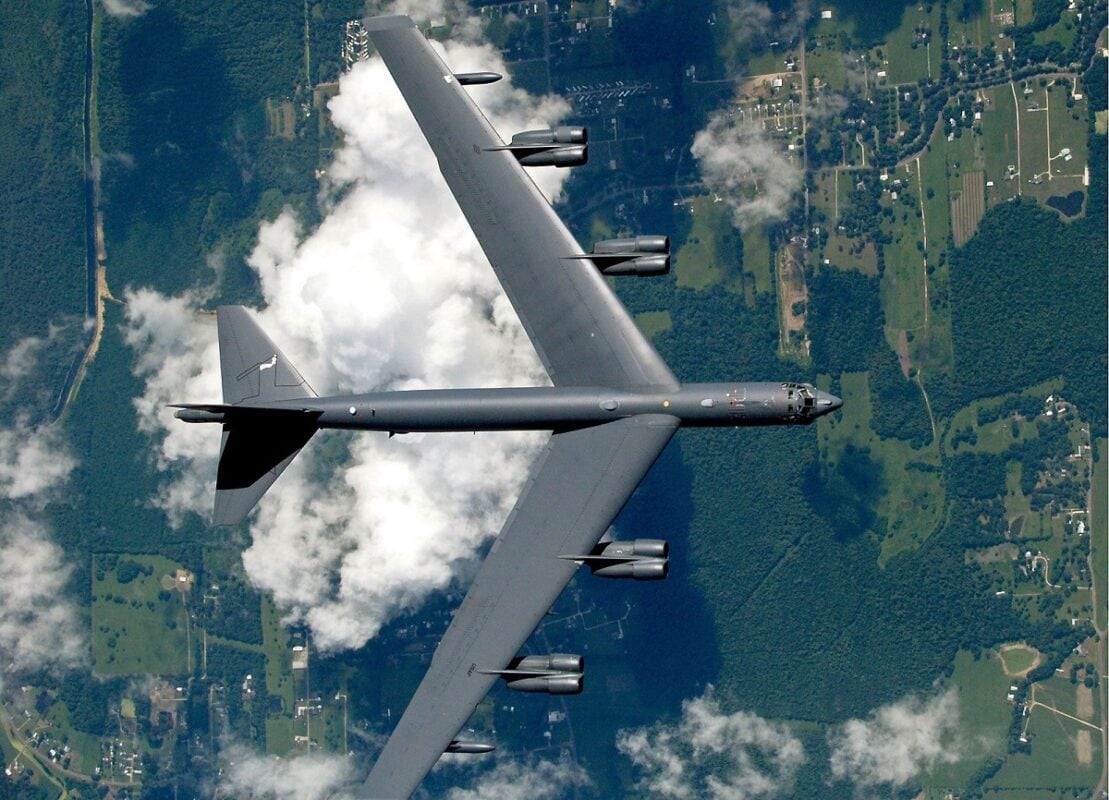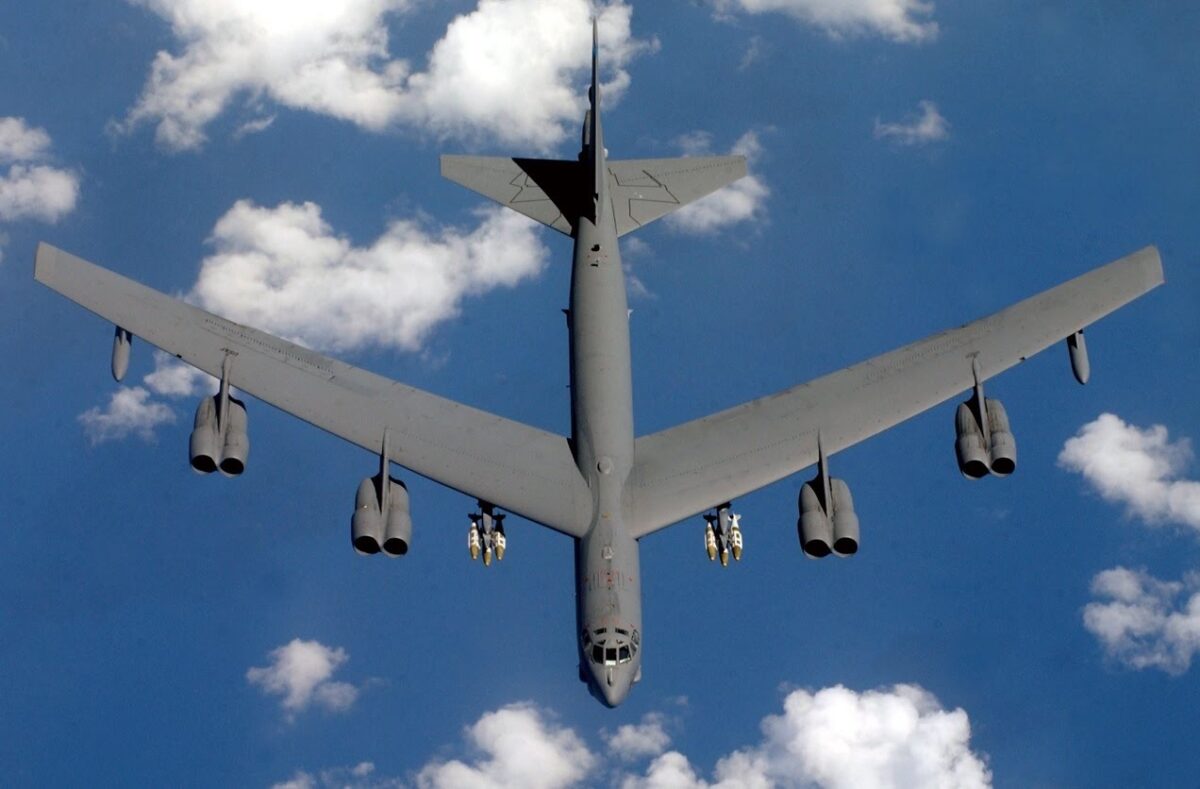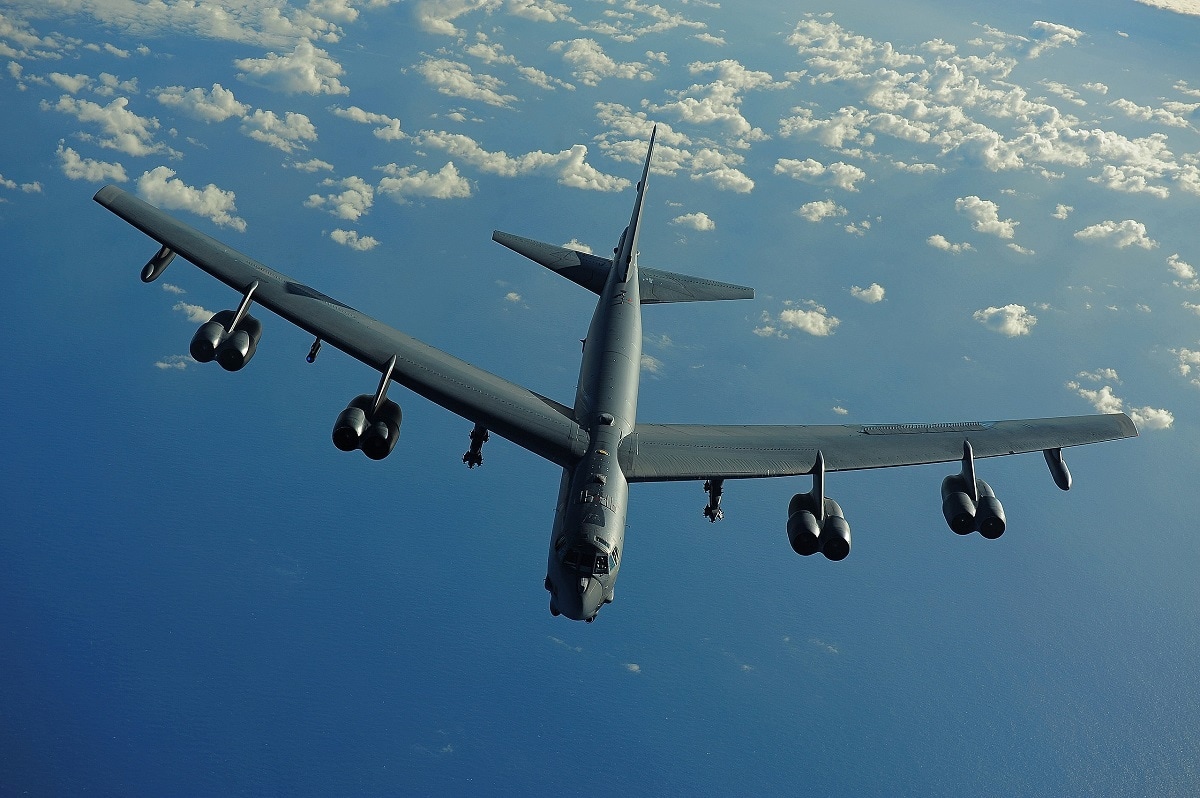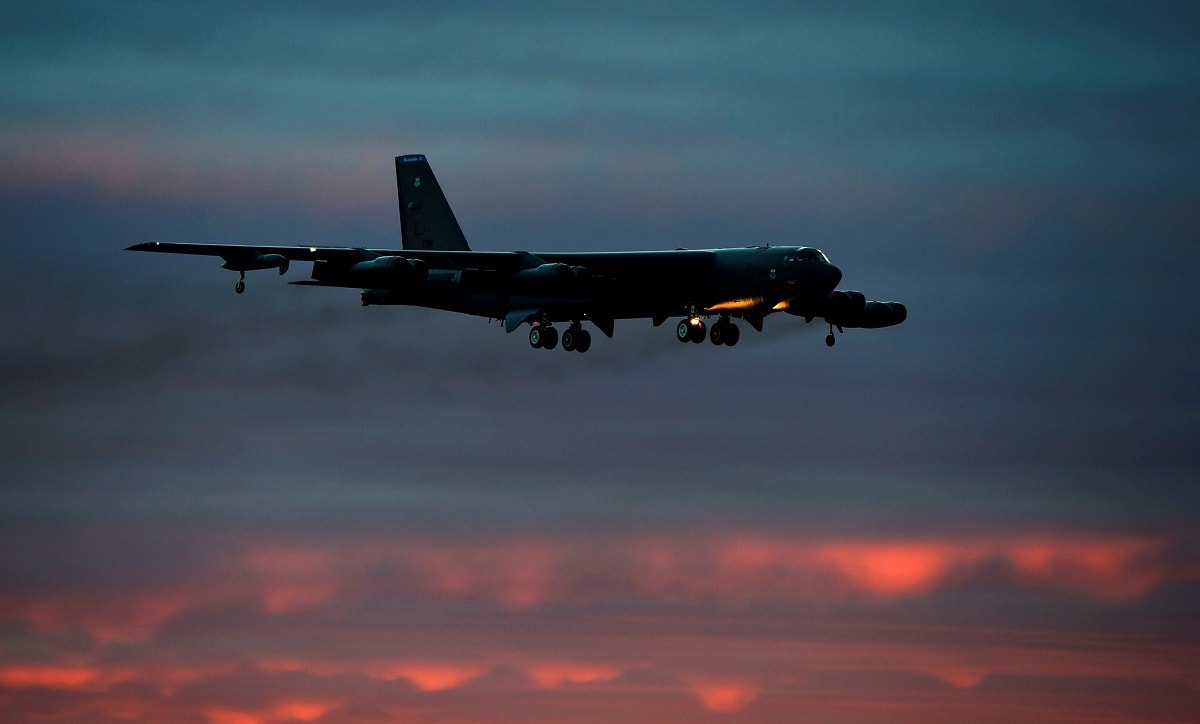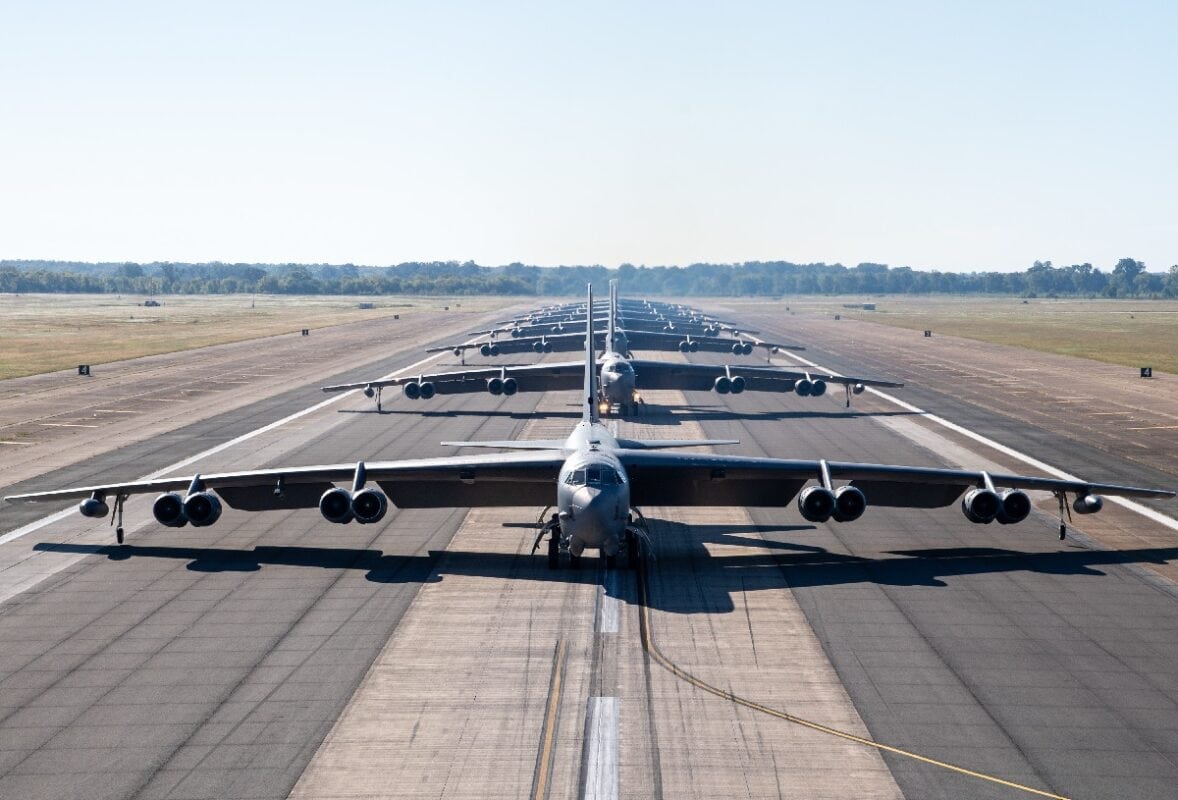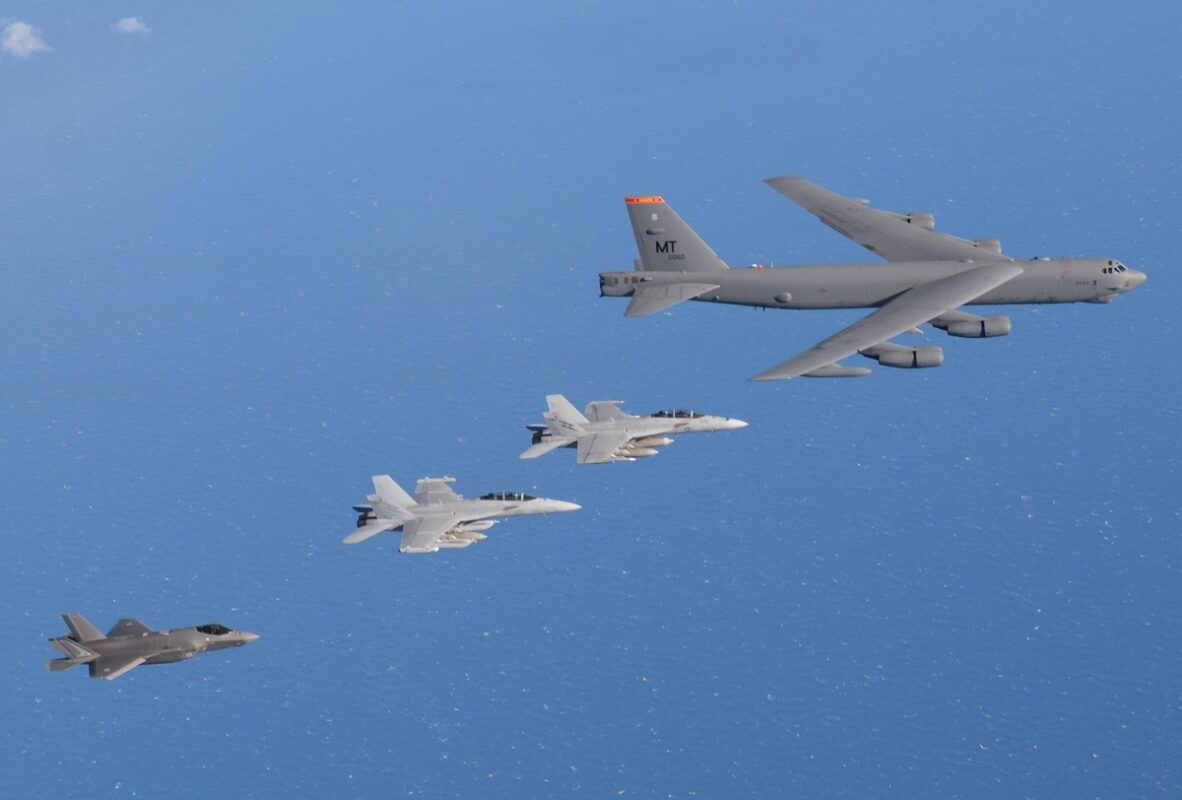Unstoppable Power: 16 Breathtaking Photos of the B-52 Bomber

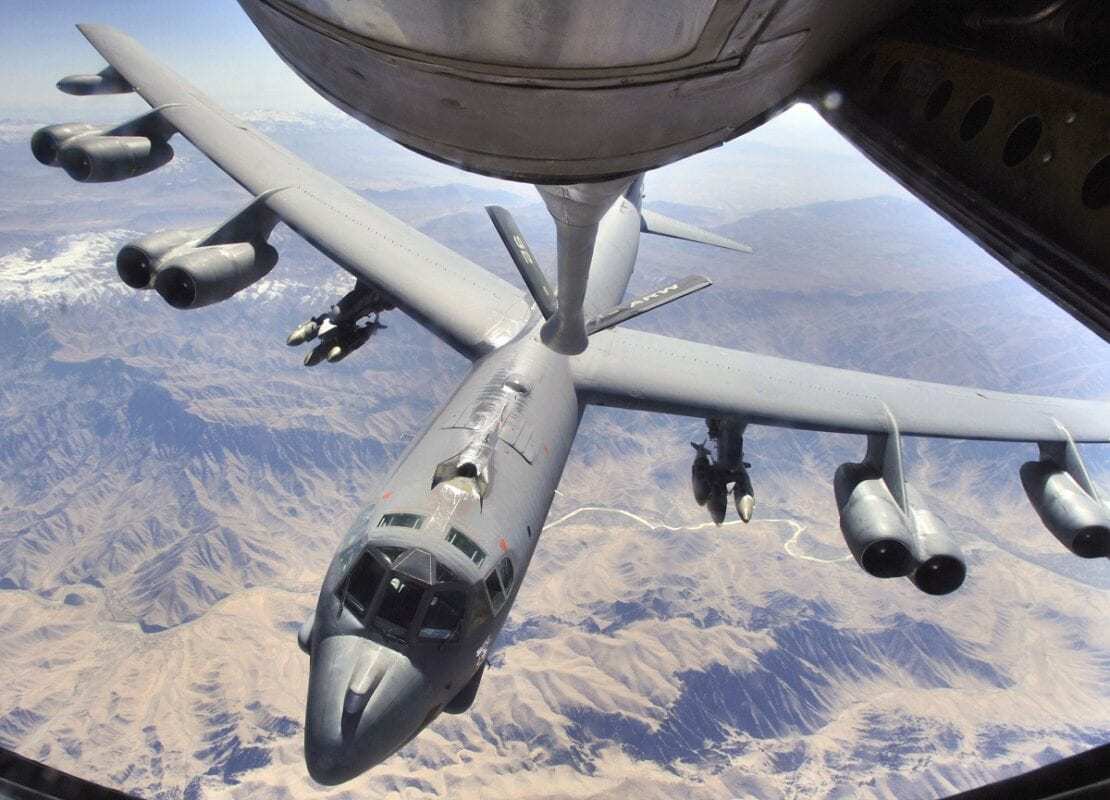
The B-52 Bomber is an amazing bomber. She is old, she should, in fact, not even be flying as she was created in the 1950s. And yet, the old B-52 Stratofortress could somehow serve close to 100 years if new engines and other upgrades keep the old bomber flying.
Here we present the latest coverage of the B-52 and 16 amazing photos that will show you why this bomber is so respected:
Sticker shock has struck most anyone in recent weeks who has filled up their car’s gas tank or walked the aisles of a grocery store. Inflation continues to drive up prices for everything from daily items to durable goods. Similarly, most Americans are having to do more with less.
Meanwhile, the U.S. military faces some staggering budget challenges of its own.
According to Air Force Magazine, the cost of upgrades to the B-52 Stratofortress is running considerably higher than what some U.S. Air Force officials expected. The cost of re-engineering, which is needed to keep the aging Cold War-era bombers in service through the 2050s, has reportedly increased by 50% – and it’s not just because of rising materials costs.
Air Force Acquisition Executive Andrew P. Hunter acknowledged the B-52 Commercial Engine Replacement Program’s price hike in testimony to the U.S. House Armed Services Committee.
“We currently believe there is cost growth from our decision to work that we did originally through the middle-tier acquisition program to what we anticipate we’ll be looking at [in] Milestone B,” Hunter said, referring to the project’s readiness to enter the engineering and manufacturing development phase.
The increasing costs and challenges associated with maintaining these vital assets underline the ongoing financial pressures faced by the U.S. military, necessitating careful budget planning and allocation of resources.
The Rolls-Royce of Engines
The Air Force announced last September that Rolls-Royce had been awarded a $2.6 billion Commercial Engine Replacement Program contract to keep the B-52s flying and in service. The new engines were seen as a significant upgrade from the current Pratt & Whitney-made TF33 engines, which date back to the early 1960s. The F130 is a tested and proven engine, and the platform has accumulated more than 27 million engine flight hours.
“The F130 is the perfect fit for the B-52 with proven reliability, superior life cycle cost, and low integration risk,” the engine’s manufacturer stated when it was awarded the contract. “A variant of the Rolls-Royce engine selected to power the iconic B-52 is already in service with the USAF around the world, powering both the C-37 and E-11 BACN aircraft.”
Rolls-Royce also announced it would use state-of-the-art digital engine health monitoring tools to determine how to incorporate the engines with the aging bombers. The company has already made digital models of the massive bombers, thus allowing engineers to map models of the new engines and figure out how they would interact with other components and systems. Rolls-Royce also traded digital models with Boeing – the aircraft’s original manufacturer – to help engineers fit the F130 precisely inside the B-52’s nacelles and determine where to place new components.
Not So Low Integration Costs
Hunter told the House Committee that cost increases have more to do with integrating the engines on the B-52s, which is a Boeing effort. It has less to do with the engines themselves, which will be built by Rolls-Royce.
“I want to emphasize that a lot of that engineering work is actually inside the airplane, on the support structure to which the engines attach, versus the engine itself, which is largely a commercial engine that already exists,” Hunter said, adding that the engine needs only “a modest number of modifications.”
A B-52H from the 2nd Bomb Wing departs after refueling from a KC-135 Stratotanker over Afghanistan.
A U.S. Air Force B-52 Stratofortress assigned to the 2nd Bomb Wing departs after refueling from a KC-135 Stratotanker, assigned to the 340th Expeditionary Air Refueling Squadron, during a multi-day Bomber Task Force mission over Southwest Asia, Dec. 10, 2020. The B-52 is a long-range bomber with a range of approximately 8,800 miles, enabling rapid support of BTF missions or deployments and reinforcing global security and stability. (U.S. Air Force photo by Staff Sgt. Trevor T. McBride)
A U.S. Air Force B-52H Stratofortress, assigned to the 20th Expeditionary Bomb Squadron, deployed from Barksdale Air Force Base, Louisiana, approached the flightline at Royal Australian Air Force Base Darwin, Australia, on April 6, 2018. Two U.S. Air Force bombers visited the base in Australia’s Northern Territory to support the U.S. Pacific Command’s Enhanced Air Cooperation initiative in cooperation with RAAF joint terminal attack controller teams. The EAC comprises a range of air exercises and training activities aimed at enhancing regional cooperation, coordination, and interoperability between Australian and U.S. servicemembers.
A U.S. Air Force Boeing B-52H Stratofortress of the 2nd Bomb Wing on static display with weapons at Barksdale Air Force Base, Louisiana, in 2006.
EDWARDS AIR FORCE BASE, Calif. (June 12, 2019) – The B-52 aircraft from Edwards Air Force Base carries an AGM-183A Air-launched Rapid Response Weapon (ARRW) Instrumented Measurement Vehicle (IMV) for its first captive carry flight over Edwards Air Force Base. (U.S. Air Force photo by Christopher Okula)
A B-52H-175-BW (61-0036) Stratofortress taking off from Tinker AFB, Oklahoma.
PACIFIC OCEAN (July 10, 2010) – A U.S. Air Force B-52 Stratofortress from the 20th Expeditionary Bomb Squadron, Barksdale AFB, Louisiana, flies a mission in support of the Rim of the Pacific (RIMPAC) 2010. RIMPAC includes more than 14 nations, 32 ships, five submarines, more than 170 aircraft, and more than 20,000 Soldiers, Sailors, Marines, Airmen, and Coast Guardsmen. RIMPAC enhances cooperation between participating nations and prepares our forces to plan, communicate, and execute a wide range of military operations. (U.S. Air Force photo by Tech. Sgt. Jacob Bailey)
B-52H Stratofortress aircraft from the 2nd Bomb Wing line up on the runway at Barksdale Air Force Base, Louisiana, on October 14, 2020. The military aircraft are prepared for competition before taking off as part of a readiness exercise conducted to ensure the 2nd BW is able to provide the nation with winning combat power. (U.S. Air Force photo by Senior Airman Tessa B. Corrick)
Royal Australian Air Force aircraft including No. 6 Squadron (SQN) EA-18G Growler, No. 1 SQN F/A-18F Super Hornet, and No. 3 SQN F-35A Lightning aircraft, fly alongside United States Air Force B-52 Stratofortress aircraft from the 69th Expeditionary Bomb Squadron during Exercise Talisman Sabre 2021 at Guam. (Photo credit: SGT Andrew Eddie, 464SQN AFID-AMB)
Hits: 13
